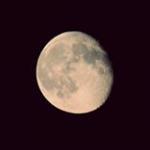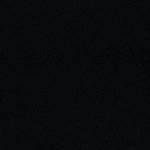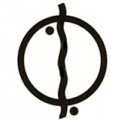
Brian Caldwell
-
Posts
153 -
Joined
-
Last visited
Reputation Activity
-
 Brian Caldwell got a reaction from kidzrevil in My thoughts on the Kipon Medium Format "Speedbooster"
Brian Caldwell got a reaction from kidzrevil in My thoughts on the Kipon Medium Format "Speedbooster"
Character/rendering are entirely separate issues from photographic basics like DOF and perspective. Certainly, if you like the character then there's nothing wrong with that. Heck, if you find that using an 80mm lens with both a 1.4x teleconverter and 0.7x focal reducer (in series!) to get back to 80mm but with some funky aberrations gives you the results you want then you should certainly do it. My only real objection is with pseudo-explanations - basically "fake physics" - that cross the line into mysticism.
Mini correction: techically, aberrations can and do influence DOF.
-
 Brian Caldwell got a reaction from Timotheus in My thoughts on the Kipon Medium Format "Speedbooster"
Brian Caldwell got a reaction from Timotheus in My thoughts on the Kipon Medium Format "Speedbooster"
Character/rendering are entirely separate issues from photographic basics like DOF and perspective. Certainly, if you like the character then there's nothing wrong with that. Heck, if you find that using an 80mm lens with both a 1.4x teleconverter and 0.7x focal reducer (in series!) to get back to 80mm but with some funky aberrations gives you the results you want then you should certainly do it. My only real objection is with pseudo-explanations - basically "fake physics" - that cross the line into mysticism.
Mini correction: techically, aberrations can and do influence DOF.
-
 Brian Caldwell reacted to jcs in My thoughts on the Kipon Medium Format "Speedbooster"
Brian Caldwell reacted to jcs in My thoughts on the Kipon Medium Format "Speedbooster"
This discussion reminds me of similar ones for analog vs. digital audio, vinyl/tape vs. digital, tubes vs. MOSFETs, one preamp vs. another preamp, one mic vs. another, crisp and clinical vs. warm and creamy, etc. Head on over to GearSlutz for a taste of audio drama for those inclined: https://www.gearslutz.com/board/ (around 10 million posts!). It's a great resource for audio related questions for filmmaking too.
In agreement with what @Brian Caldwell just said- these lens combos are creating interesting character, analog optical filters (transfer functions), which is art, and that is cool. It has nothing to do with sensor size per se, only the combination of optics to get the desired (or discovered!) look.
Here's an example of Shane Hurlbut comparing Leica Summicron-C to Cooke S4, same sensor size (Super35), and getting vastly different results (his perception, some of you may even disagree with his results):
http://www.thehurlblog.com/lens-tests-leica-summicron-c-vs-cooke-s4-film-education/
To wrap it all up:
Leica Summicron-C Lenses:
Flatter image Makes Monette look more sophisticated and older Makes her look wider than the Cooke S4 More of a white out with lens flares; doesn’t do as well as the Cooke S4 with lens flares. Bokeh less stop signing, more round Neutral lens Less detail in her face Doesn’t hold highlights as well as Cooke S4 Less contrast
Cooke S4 Lenses:
More three dimensional quality Makes Monette look younger Makes her look skinnier Better with lens flares than the Summicron-C lenses Slightly more yellow than the Summicron-C Bokeh has more of a stop signing effect More detail in her face Holds highlights more than the Summicron lenses More contrast Thanks @bunk for creating these excellent computer renderings, which physically simulate perfect lenses and sensors via ray tracing photon paths for different sensor sizes and using perfect mathematical equivalence with pixel perfect results:
http://www.eoshd.com/comments/topic/20975-full-frame-aesthetic/?do=findComment&comment=167154
@Mattias Burling offered $100 if the images matched perfectly (if I read the thread correctly, see link above). Mattias did you pay bunk? The time and effort to set up and render those examples was worth way more than $100, and should end any further arguments regarding sensor size for anyone interested in a scientific and rational discussion (bunk also included the Cinema 4D project files for anyone to replicate as per the Scientific Method). @gatopardo replicated the results with VRay (another photon ray tracer) and 3DSMax.
Mattias' comments on medium format lenses being very cheap and 'free' in some cases is very useful information for those admiring the kinds of looks possible with a focal reducer and old medium format lenses, which create interesting analog filters which a lot of people love. As noted by Hurlbut and others, the Cooke S4 causes distortion and has other artifacts which make people look thinner, more 3D, better highlights, etc. Imperfection is the spice of art- makes the flavor interesting which will be loved by many where different forms of spice will be loved by others (or for some uses, no spice at all- clinically accurate (Sony/Zeiss for example)). Like comparing Neve/Avalon preamps (warm/colored) to Grace (clinically clean). Neither better than the other, chocolate vs. vanilla...
-
 Brian Caldwell got a reaction from Marco Tecno in My thoughts on the Kipon Medium Format "Speedbooster"
Brian Caldwell got a reaction from Marco Tecno in My thoughts on the Kipon Medium Format "Speedbooster"
Character/rendering are entirely separate issues from photographic basics like DOF and perspective. Certainly, if you like the character then there's nothing wrong with that. Heck, if you find that using an 80mm lens with both a 1.4x teleconverter and 0.7x focal reducer (in series!) to get back to 80mm but with some funky aberrations gives you the results you want then you should certainly do it. My only real objection is with pseudo-explanations - basically "fake physics" - that cross the line into mysticism.
Mini correction: techically, aberrations can and do influence DOF.
-
 Brian Caldwell reacted to jcs in My thoughts on the Kipon Medium Format "Speedbooster"
Brian Caldwell reacted to jcs in My thoughts on the Kipon Medium Format "Speedbooster"
Thanks for creating the animated gif which clearly shows equivalence, even when the settings aren't exact (which mostly effects shadows- bokeh matches pretty nicely). If you want to see perfection, dig up the computer graphics renderings from one of the "FF/MF look" threads on this forum: the results are pixel perfect (probably (photon) ray-traced optics).
I think what people are liking about the MF lenses is their character, and even what some might call artifacts (including artifacts from the focal reducer).
-
 Brian Caldwell reacted to Timotheus in My thoughts on the Kipon Medium Format "Speedbooster"
Brian Caldwell reacted to Timotheus in My thoughts on the Kipon Medium Format "Speedbooster"
Of course results are what count. My 2 cents: just don't get caught up in a possibly expensive quest for medium format glass assuming there is a super different, unique, mythical look to be achieved. (Not to say that hunting down and using vintage glass is a blast!).
Understanding equivalence can help one understand what results can be expected from any combination of sensor size and lens. Yes, there are unique combo's at the extremes of the range (no m43 equivalent lens for a 50mm f1.0 on full frame). But in general: for the most frequently used focal lengths, you can find equivalent lenses for the current different sensor sizes, thus yielding (close to) identical optical results.
-
 Brian Caldwell got a reaction from jcs in My thoughts on the Kipon Medium Format "Speedbooster"
Brian Caldwell got a reaction from jcs in My thoughts on the Kipon Medium Format "Speedbooster"
Character/rendering are entirely separate issues from photographic basics like DOF and perspective. Certainly, if you like the character then there's nothing wrong with that. Heck, if you find that using an 80mm lens with both a 1.4x teleconverter and 0.7x focal reducer (in series!) to get back to 80mm but with some funky aberrations gives you the results you want then you should certainly do it. My only real objection is with pseudo-explanations - basically "fake physics" - that cross the line into mysticism.
Mini correction: techically, aberrations can and do influence DOF.
-
 Brian Caldwell got a reaction from noone in My thoughts on the Kipon Medium Format "Speedbooster"
Brian Caldwell got a reaction from noone in My thoughts on the Kipon Medium Format "Speedbooster"
You are expecting a level of precision in this comparison that is entirely unreasonable. Little things like changes in distortion and entrance pupil position during zooming make it impractical to make a blink comparator test completely perfect. What the comparison does show - with more than sufficient precision - is that you can optically reproduce all aspects of an image shot on a large format with one shot on a smaller format - or vice versa.
The notion that, say, an 80mm medium format lens has some inherent "80mm-ness" or "medium formatishness" that somehow stays with that lens after you attach a focal reducer is just silliness. The combination of a 0.7x focal reducer and an 80mm lens is a 56mm lens. Period. Put that 56mm lens on a 24x36mm format camera and it will behave just like any other 56mm lens attached to that camera, the only caveats being related to aberrations and other flaws in the lens and focal reducer.
-
 Brian Caldwell got a reaction from Timotheus in My thoughts on the Kipon Medium Format "Speedbooster"
Brian Caldwell got a reaction from Timotheus in My thoughts on the Kipon Medium Format "Speedbooster"
You should be aware that this is a religious discussion. Comparisons, and discussions about comparisons, should be avoided and only discussed in private!
-
 Brian Caldwell got a reaction from Timotheus in My thoughts on the Kipon Medium Format "Speedbooster"
Brian Caldwell got a reaction from Timotheus in My thoughts on the Kipon Medium Format "Speedbooster"
You are expecting a level of precision in this comparison that is entirely unreasonable. Little things like changes in distortion and entrance pupil position during zooming make it impractical to make a blink comparator test completely perfect. What the comparison does show - with more than sufficient precision - is that you can optically reproduce all aspects of an image shot on a large format with one shot on a smaller format - or vice versa.
The notion that, say, an 80mm medium format lens has some inherent "80mm-ness" or "medium formatishness" that somehow stays with that lens after you attach a focal reducer is just silliness. The combination of a 0.7x focal reducer and an 80mm lens is a 56mm lens. Period. Put that 56mm lens on a 24x36mm format camera and it will behave just like any other 56mm lens attached to that camera, the only caveats being related to aberrations and other flaws in the lens and focal reducer.
-
 Brian Caldwell got a reaction from jcs in My thoughts on the Kipon Medium Format "Speedbooster"
Brian Caldwell got a reaction from jcs in My thoughts on the Kipon Medium Format "Speedbooster"
You are expecting a level of precision in this comparison that is entirely unreasonable. Little things like changes in distortion and entrance pupil position during zooming make it impractical to make a blink comparator test completely perfect. What the comparison does show - with more than sufficient precision - is that you can optically reproduce all aspects of an image shot on a large format with one shot on a smaller format - or vice versa.
The notion that, say, an 80mm medium format lens has some inherent "80mm-ness" or "medium formatishness" that somehow stays with that lens after you attach a focal reducer is just silliness. The combination of a 0.7x focal reducer and an 80mm lens is a 56mm lens. Period. Put that 56mm lens on a 24x36mm format camera and it will behave just like any other 56mm lens attached to that camera, the only caveats being related to aberrations and other flaws in the lens and focal reducer.
-
 Brian Caldwell got a reaction from Don Kotlos in My thoughts on the Kipon Medium Format "Speedbooster"
Brian Caldwell got a reaction from Don Kotlos in My thoughts on the Kipon Medium Format "Speedbooster"
You are expecting a level of precision in this comparison that is entirely unreasonable. Little things like changes in distortion and entrance pupil position during zooming make it impractical to make a blink comparator test completely perfect. What the comparison does show - with more than sufficient precision - is that you can optically reproduce all aspects of an image shot on a large format with one shot on a smaller format - or vice versa.
The notion that, say, an 80mm medium format lens has some inherent "80mm-ness" or "medium formatishness" that somehow stays with that lens after you attach a focal reducer is just silliness. The combination of a 0.7x focal reducer and an 80mm lens is a 56mm lens. Period. Put that 56mm lens on a 24x36mm format camera and it will behave just like any other 56mm lens attached to that camera, the only caveats being related to aberrations and other flaws in the lens and focal reducer.
-
 Brian Caldwell got a reaction from Don Kotlos in My thoughts on the Kipon Medium Format "Speedbooster"
Brian Caldwell got a reaction from Don Kotlos in My thoughts on the Kipon Medium Format "Speedbooster"
You should be aware that this is a religious discussion. Comparisons, and discussions about comparisons, should be avoided and only discussed in private!
-
 Brian Caldwell got a reaction from jcs in My thoughts on the Kipon Medium Format "Speedbooster"
Brian Caldwell got a reaction from jcs in My thoughts on the Kipon Medium Format "Speedbooster"
You should be aware that this is a religious discussion. Comparisons, and discussions about comparisons, should be avoided and only discussed in private!
-
 Brian Caldwell got a reaction from Parker in My thoughts on the Kipon Medium Format "Speedbooster"
Brian Caldwell got a reaction from Parker in My thoughts on the Kipon Medium Format "Speedbooster"
You should be aware that this is a religious discussion. Comparisons, and discussions about comparisons, should be avoided and only discussed in private!
-
 Brian Caldwell got a reaction from Xavier Plagaro Mussard in OM mount to m43 Speedbooster?
Brian Caldwell got a reaction from Xavier Plagaro Mussard in OM mount to m43 Speedbooster?
All of the original m43 Speed Boosters were replaced by the Ultra model a couple of years ago. The OM version of the Ultra is a current product: http://www.metabones.com/products/details/MB_SPOM-m43-BM3
-
 Brian Caldwell got a reaction from Cinegain in Lens advice for GX80 - Speedbooster or native
Brian Caldwell got a reaction from Cinegain in Lens advice for GX80 - Speedbooster or native
I haven't tried that particular combination, but the 0.64x BMCC Speed Booster has a full millimeter *less* clearance on the camera side than the 0.64x XL. The XL also has a larger image circle that is compatible with the fill size m43 format, and it is also optimized for the standard m43 filter stack rather than the non-standard Blackmagic stack. Odds are you can probably get the BMCC version to work, but you'll probably be pressing on the flexible shutter cover and you won't get optimal image quality.
-
 Brian Caldwell got a reaction from jase in Lens advice for GX80 - Speedbooster or native
Brian Caldwell got a reaction from jase in Lens advice for GX80 - Speedbooster or native
I haven't tried that particular combination, but the 0.64x BMCC Speed Booster has a full millimeter *less* clearance on the camera side than the 0.64x XL. The XL also has a larger image circle that is compatible with the fill size m43 format, and it is also optimized for the standard m43 filter stack rather than the non-standard Blackmagic stack. Odds are you can probably get the BMCC version to work, but you'll probably be pressing on the flexible shutter cover and you won't get optimal image quality.
-
 Brian Caldwell got a reaction from jonpais in Lens advice for GX80 - Speedbooster or native
Brian Caldwell got a reaction from jonpais in Lens advice for GX80 - Speedbooster or native
I haven't tried that particular combination, but the 0.64x BMCC Speed Booster has a full millimeter *less* clearance on the camera side than the 0.64x XL. The XL also has a larger image circle that is compatible with the fill size m43 format, and it is also optimized for the standard m43 filter stack rather than the non-standard Blackmagic stack. Odds are you can probably get the BMCC version to work, but you'll probably be pressing on the flexible shutter cover and you won't get optimal image quality.
-
 Brian Caldwell got a reaction from Adept in Panasonic GH5 - all is revealed!
Brian Caldwell got a reaction from Adept in Panasonic GH5 - all is revealed!
The 0.64x Speed Booster XL and 0.71x Ultra are both designed to cover fullframe 4:3 format (21.6mm diagonal). As long as you use a master lens with a sufficiently large image circle you wont have vignetting. 24x36mm format lenses will always work. I expect some issues with certain APS-C lenses.
Well, you would be slightly hampered by 4:3 if shooting with 2x anamorphics. But with 1.79x anamorphics on the other hand . . . . .
-
 Brian Caldwell got a reaction from sudopera in Panasonic GH5 - all is revealed!
Brian Caldwell got a reaction from sudopera in Panasonic GH5 - all is revealed!
The 0.64x Speed Booster XL and 0.71x Ultra are both designed to cover fullframe 4:3 format (21.6mm diagonal). As long as you use a master lens with a sufficiently large image circle you wont have vignetting. 24x36mm format lenses will always work. I expect some issues with certain APS-C lenses.
Well, you would be slightly hampered by 4:3 if shooting with 2x anamorphics. But with 1.79x anamorphics on the other hand . . . . .
-
 Brian Caldwell got a reaction from Axel in Panasonic GH5 - all is revealed!
Brian Caldwell got a reaction from Axel in Panasonic GH5 - all is revealed!
The 0.64x Speed Booster XL and 0.71x Ultra are both designed to cover fullframe 4:3 format (21.6mm diagonal). As long as you use a master lens with a sufficiently large image circle you wont have vignetting. 24x36mm format lenses will always work. I expect some issues with certain APS-C lenses.
Well, you would be slightly hampered by 4:3 if shooting with 2x anamorphics. But with 1.79x anamorphics on the other hand . . . . .
-
 Brian Caldwell got a reaction from jonpais in Panasonic GH5 - all is revealed!
Brian Caldwell got a reaction from jonpais in Panasonic GH5 - all is revealed!
The 0.64x Speed Booster XL and 0.71x Ultra are both designed to cover fullframe 4:3 format (21.6mm diagonal). As long as you use a master lens with a sufficiently large image circle you wont have vignetting. 24x36mm format lenses will always work. I expect some issues with certain APS-C lenses.
Well, you would be slightly hampered by 4:3 if shooting with 2x anamorphics. But with 1.79x anamorphics on the other hand . . . . .
-
 Brian Caldwell got a reaction from Adept in Put a filter behind the lens?
Brian Caldwell got a reaction from Adept in Put a filter behind the lens?
Its a little complicated due to the fact that the outer surface of the Speed Booster is concave. But you should have at least 1mm of clearance with this particular combination. Note for anyone else reading this post that the Speed Booster XL for m43 has more clearance than a Speed Booster Ultra for APS-C.
-
 Brian Caldwell got a reaction from Tito Ferradans in Why nobody is talking more about the mesmerizer? :)
Brian Caldwell got a reaction from Tito Ferradans in Why nobody is talking more about the mesmerizer? :)
Can you elaborate on how the double-focusing on the Mesmerizer is not as hard as with other adapters?












